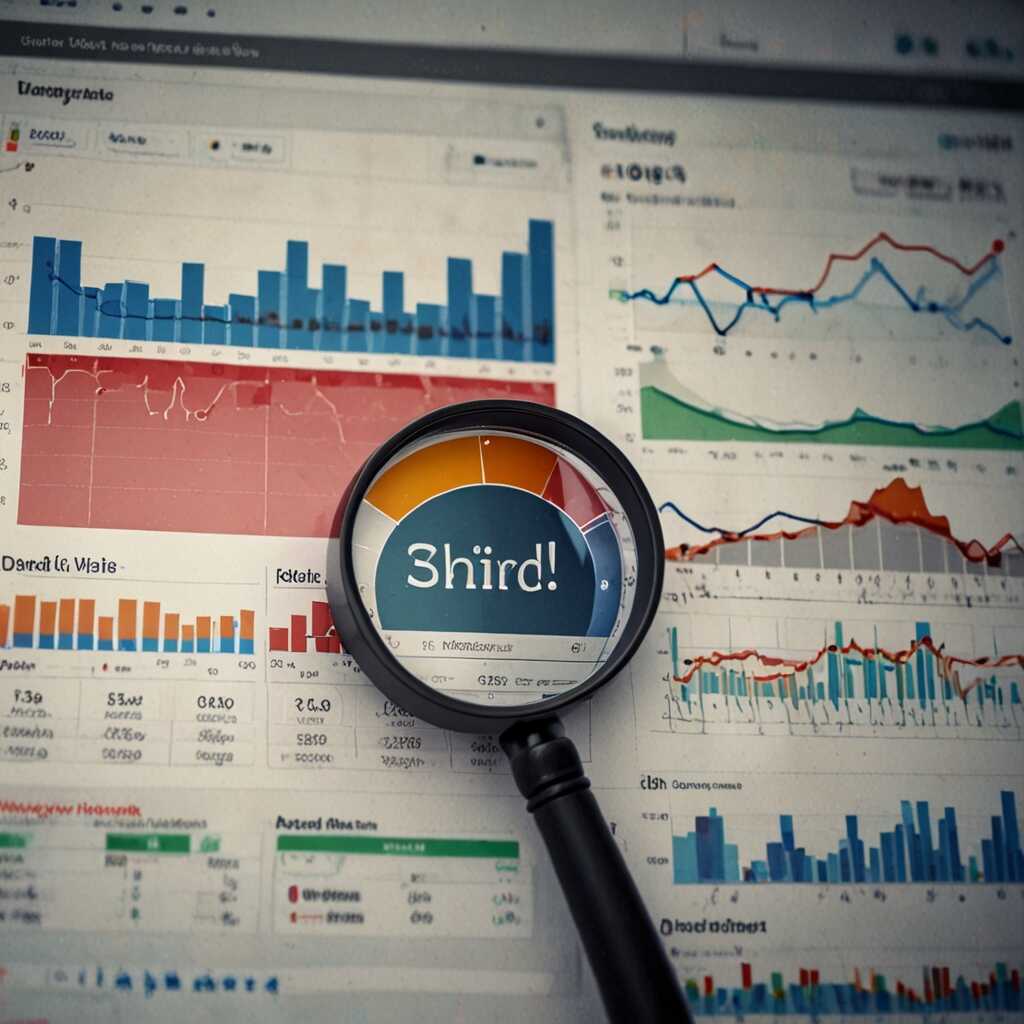Maximizing video SEO performance using analytics insights is essential for ensuring your content stands out in search results. By leveraging analytics effectively, you can enhance visibility, user engagement, and overall search engine rankings. At Metrics Rule, we understand the importance of using analytical data to fine-tune your video strategy, enabling you to drive better results in a competitive digital landscape.
The Role of Video SEO in Digital Marketing Success
Video SEO, or optimizing video content for search engines, plays a crucial role in digital marketing. It enhances search engine visibility, allowing businesses to attract more viewers. Effective video optimization strategies improve user engagement techniques, ensuring that viewers not only click but also stay on your page longer. Data shows that implementing strong video SEO practices can boost user retention rates significantly, sometimes up to 80%. This means that brands dedicated to enhancing video content can experience improved audience loyalty and increased conversion rates.
Critical Features of Effective Video SEO
To maximize video SEO effectiveness, several key features stand out. First, compelling video titles that include primary keywords significantly improve search engine rankings. Second, crafting detailed descriptions helps search engines understand the video’s content, enhancing search engine visibility. Third, utilizing timestamps in video descriptions can improve user engagement by allowing users to navigate quickly. Further, engaging video thumbnails that capture attention can attract more clicks. Finally, adding closed captions and transcripts not only helps with accessibility but also ensures the content is indexed correctly by search engines, leading to better visibility. Metrics Rule emphasizes that these features, when executed strategically, can deliver exceptional results for businesses.
Essential Analytics Tools for Effective Video SEO Measurement
To enhance your video SEO performance, utilizing the right analytics tools is essential. Top tools like Google Analytics, YouTube Analytics, and SEMrush provide comprehensive data to help you measure your video performance efficiently. Google Analytics tracks user engagement and traffic sources, allowing you to review metrics such as watch time and bounce rates. YouTube Analytics delivers insights on views, demographics, and traffic sources specific to your videos. SEMrush offers keyword research features, comparing your video performance against competitors, and identifying trends that can improve your visibility.
Comparing Features Across Analytics Platforms
When exploring video SEO tools, consider how each platform’s features enhance your SEO strategy. Google Analytics provides real-time data with custom reports, offering a user-friendly experience suitable for beginners and experts alike. YouTube Analytics, designed specifically for video content, analyzes audience retention and engagement, which directly impacts your SEO performance. Additionally, SEMrush is a versatile tool that includes keyword analysis and site audits, helping you identify SEO gaps. Testing these platforms allows you to choose the best fit for your needs while ensuring reliable tracking of your performance metrics.

Data Interpretation Techniques to Enhance Video Performance
To improve video performance, analyze key metrics such as viewer retention, engagement rates, and click-through rates. Understanding how audience demographics and behavior affect video engagement is essential. Research shows that videos that capture viewer attention in the first 30 seconds have higher retention rates. Aim for at least 70% viewer retention in that critical timeframe to boost the likelihood of favorable search engine visibility. Metrics like average watch time and user interaction help refine your video strategy and ensure it aligns with your audience’s preferences, ultimately enhancing its performance.
Essential Metrics for Understanding Audience Behavior
When analyzing video performance, focus on essential metrics that reveal audience behavior. Start with viewer retention rates, which help you understand where viewers drop off. Explore audience demographics to tailor your content effectively. Engagement rates signal how well your video resonates with viewers, indicating necessary adjustments. Use tools like Google Analytics to track these metrics over time and evaluate changes in viewer behavior. A detailed comparison over several videos can reveal trends and enable strategic content improvements, ensuring your video remains relevant and engaging in search results.
Key Metrics to Monitor for Video Visibility Improvement
- Video length: Aim for 2 to 5 minutes for optimal viewer retention.
- Click-through rate (CTR): A good CTR is around 2% to 5%.
- Average view duration: Target at least 50% of the video’s total length.
- Engagement rate: A healthy engagement rate often exceeds 10%.
- Playback locations: Track how viewers find and watch your video across different platforms.
- Thumbnail click rate: Effective thumbnails can increase views by up to 30%.
- Conversion rate: A successful video should convert 1% to 5% of viewers into clients or leads.

Using Analytics to Optimize Video Content for Target Audiences
Video analytics provides critical insights that greatly enhance audience engagement. By analyzing viewer behavior, you can determine which video titles, descriptions, and tags are resonating the most with your audience. Metrics such as watch time, click-through rates, and audience retention will reveal what keeps viewers interested. Testing variations of these elements allows you to find the best-performing combinations that drive higher engagement. For example, experimenting with five to ten different titles and their associated descriptions ensures that your video content aligns with viewer preferences, significantly increasing the chance of better SEO performance.
Key Metrics for Analyzing Audience Preferences in Video Analytics
To optimize your video content effectively, focus on key metrics such as audience demographics, watch time, and engagement rates. By segmenting viewers based on these metrics, you can tailor your videos to meet specific audience needs. Understanding which demographics watch your content helps craft relevant messages that resonate. Furthermore, monitoring how long people watch your videos informs you when engagement peaks and drops. This enables you to adjust content delivery for maximum impact. Overall, using analytics to tailor your video titles, descriptions, and tags can ensure they meet audience preferences, leading to better performance in search engine rankings.

Trend Analysis in Video SEO for Ongoing Optimization
Understanding trends in video performance is essential to adjust your SEO strategies effectively. By analyzing viewer behavior, you can identify what aspects of your videos are engaging or lack interest. Tools like Google Analytics and YouTube Insights provide data that helps track viewer behavior, such as watch time, click-through rates, and audience retention. This analytical approach enables you to ensure your content remains responsive to changing viewer interests, which in turn enhances your video’s search visibility. Moreover, regularly reviewing these metrics allows for continuous optimization, ensuring your SEO efforts align with real user behavior.
Effectively Utilizing Analytics Tools for Video Insights
Leveraging analytics tools helps you analyze viewer behavior trends effectively. Tools like YouTube Analytics and Google Analytics provide data on viewer drop-off rates, engagement, and overall performance. For example, knowing that up to 60% of viewers typically drop off before a video’s end can prompt you to restructure content for better engagement. By using these analytics tools, you can also test different video lengths or topics, helping you to find the right balance that resonates with your audience. This continuous optimization based on reliable data ensures that your SEO strategy remains effective and user-focused.
Advantages of Leveraging Analytics for Video Optimization
- Enhanced visibility: Improve your video ranking based on actionable insights.
- Better audience understanding: Know what viewers like by analyzing watch patterns.
- Targeted content creation: Use analytics to make videos that resonate with your audience.
- Increased user engagement: Analytics helps you craft messages that keep viewers watching.
- Improved retention rates: Optimize videos using data to keep audiences interested longer.
- Reduced production costs: Save resources by producing content that meets audience demand.
- Data-driven decisions: Make informed choices that drive better video SEO strategies.

Keyword Research and Metadata Optimization Techniques
To improve video SEO, it’s essential to employ effective keyword research techniques. Start by using tools like Google Trends, Ahrefs, and SEMrush to identify relevant keywords. Analyze competitor videos to see which keywords they target and how well they perform. Combining this data helps create a strategic keyword list tailored to your video content. In terms of metadata optimization, ensure you include your primary keywords in the title, description, and tags, which enhances video discoverability. Additionally, incorporating a strong call-to-action can help engage viewers, ultimately improving discoverability and rankings.
Key Elements of Effective Metadata for Videos
When optimizing metadata for videos, focus on these key elements: title, description, and tags. Your title should contain primary keywords and be catchy, thereby enhancing click-through rates. The description must provide a clear summary of your video while including secondary keywords naturally. Tags should reflect main and related keywords to ensure your video appears in relevant searches. This strategy not only boosts your chances of ranking high on search engines like Google and Bing but also contributes to improved crawling and indexing of your content. Moreover, consider the user experience—metadata must feel authentic and represent what viewers can expect, increasing engagement and watch time.
User Experience Factors Impacting Video SEO Rankings
Enhancing user experience is crucial for boosting video SEO rankings. Key factors include video loading times, user engagement strategies, and accessibility features. Fast video loading times can significantly reduce bounce rates, leading to better retention. When videos are interactive, they engage viewers longer, which positively affects search rankings. Accessibility features ensure that content is usable by everyone, contributing to higher engagement and wider reach. Increased viewer retention rates lead to better visibility in search engine results, as platforms like Google often reward quality content that keeps users engaged.
Importance of Interactive Content for Viewer Engagement
Interactive content is essential for maximizing viewer engagement. This type of content actively involves users, inviting them to participate rather than just observe. For instance, quizzes, polls, or interactive annotations can significantly improve retention rates. Research shows that interactive videos can boost viewer engagement by as much as 50%. This increase in engagement leads to a longer viewing duration, which is a proven factor that search engines consider when ranking videos. The more engaged viewers are, the more likely they are to share content, helping further enhance visibility and SEO performance.
Brands and Their Relevance in Video Marketing Analytics
- TubeBuddy: Helps with keyword research but offers limited integration with other tools.
- VidIQ: Provides excellent insights with a user-friendly interface for marketers.
- Wistia: Great for company branding but might be costly for smaller businesses.
- Google Analytics: Essential for tracking user behavior but not video-specific.
- Canva: Useful for creating thumbnails but lacks advanced video analytics features.
- Facebook Video Insights: Good for social metrics, yet limited to Facebook platform.
- YouTube Analytics: Excellent for channel growth, but navigating its complexity can be challenging for beginners.
Evaluating Success Metrics to Inform Future Video Strategies
To evaluate your video performance, start by using analytics tools to track essential metrics. Key performance indicators (KPIs) like watch time, audience retention, and engagement rate provide insight into how well your videos are performing. For example, if you notice high watch times but low engagement, this suggests that while your content is relevant, it may lack a compelling call to action. Use past performance data to identify patterns and areas for improvement. Create more focused video strategies by testing different lengths, formats, or promotional methods based on these analytics insights.
Key Performance Indicators for Video Marketing
Understanding key performance indicators (KPIs) is essential when assessing video marketing success. Focus on metrics like watch time, click-through rates, and engagement stats, as these help gauge viewer interest and interaction. For instance, tracking the average view duration shows how engaging your videos are. If your average view duration is decreasing, this is a sign to refine your content and structure. Additionally, assessing conversion rates after viewing can provide a direct link to how video content drives actions. Being attentive to these analytics ensures you can deliver videos that resonate and perform well in search engine results.
